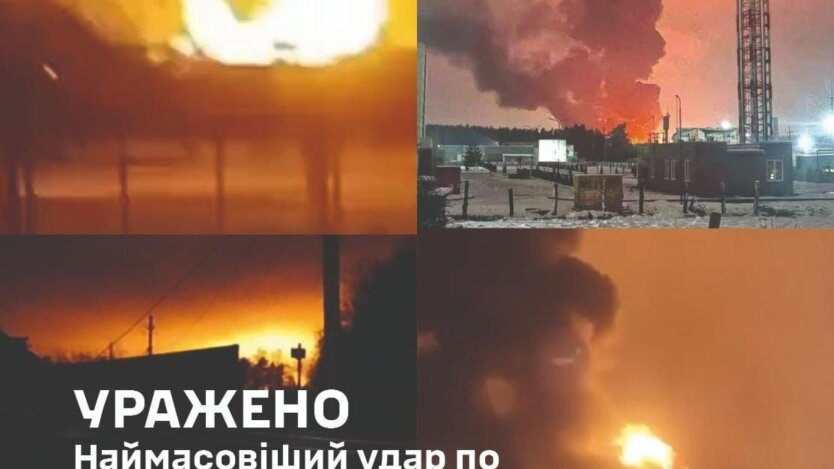The General Staff of the Armed Forces of Ukraine confirmed the largest shelling by the Russian Federation during the war: what was hit.


The Ukrainian Armed Forces carried out the largest attack on Russian military facilities
According to the General Staff of the Armed Forces of Ukraine, the Ukrainian Armed Forces launched the largest attack on Russian military facilities, striking at distances of 200 to 1100 kilometers deep into the territory of the aggressor.
In particular, the Ukrainian military attacked sites in four regions of Russia: Bryansk, Saratov, Tula regions, and Tatarstan. Among these sites was a fuel storage base 'Crystal Plant' in Engels, where a fire broke out after a previous strike and had already been extinguished, but reignited.
Special attention was focused on the Bryansk Chemical Plant in the city of Seltso, where ammunition for Russian artillery, MLRS, aviation, and components for cruise missiles 'X-59' are produced. A powerful secondary detonation was observed at the plant for several hours. During the attack, two enemy anti-aircraft missile systems 'Tor' and 'Buk' were also destroyed.
The operation involved units from unmanned systems, special forces, missile troops, the Air Forces of the Armed Forces of Ukraine, the Military Intelligence of the Ministry of Defense, and the Security Service of Ukraine. The Saratov oil refinery and the Kazanorgsintez plant were also damaged, resulting in fires.
Military leadership emphasizes that similar operations against facilities that supply the Russian army with ammunition, equipment, and fuel will continue until the complete cessation of armed aggression by the Russian Federation against Ukraine.
Read also
- NATO prepares for Russia's invasion after the war in Ukraine: the whole problem is Trump
- Front line as of July 1, 2025. Summary of the General Staff
- Zelensky and the General Staff confirmed the death of Colonel Zakharevich
- Foreign Affairs: Ukraine can achieve a 'Korean scenario' in the war with Russia
- Storming the Enemy: Russians Forced to Attack Sumy Region 'On Their Own Two Feet'
- Unstable Frontline: How Battles Are Ongoing in the Zaporizhia Direction










